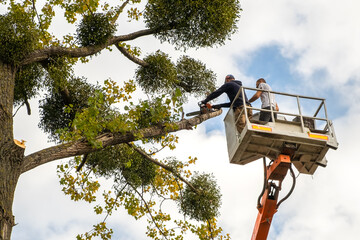Whether you are a roofing contractor or a homeowner, you need to ensure that you have a clear contract in place. Misunderstandings and disputes can occur, which could lead to problems down the line.

Location can affect how much a roof costs. There are also factors like weather, which can add extra costs. Read on Five Star Roofing and Contracting for more details.
When a contractor is local, it shows they are committed to their community and can provide quality service. Inquire about their insurance coverage and licensing rules. Also, look for certifications and reviews from previous clients.
Clearly define the project’s start and end dates in the contract, as well as any interim deadlines tied to specific milestones of the project. Also, include a breakdown of total project costs, including labor and materials, as well as any additional fees that may be applicable to the job.
Materials
The type of building materials used for a home’s roof will have a big impact on its structural integrity and overall aesthetics. While there are many options to choose from, the choice will mainly come down to what is best for a particular location and architectural style. There are also different roofing materials available to suit specific needs, such as durability, longevity and maintenance requirements.
Choosing the right roofing material will help ensure the safety of your family and protect the value of your home. A professional will be able to recommend a suitable material for your home based on its climate and architectural style, while also taking into account the budget and resale value of the property.
Asphalt shingles are the most common roofing material for homes, as they are inexpensive and durable. They are easy to install and can be customized for different styles of houses. Other popular roofing materials include clay and slate, which have a distinctive look and are highly resistant to weather damage. Slate is more expensive, but it will add value to your home and will last for generations.
Metal roofing is a reliable option that can withstand high winds and hail. It also has an appealing appearance and can lower your energy bills. Some metal roofs are made with an attractive green coating that can help improve the curb appeal of your home.
Another roofing material that offers good protection is EPDM (synthetic rubber). It is affordable and durable. It is also fire-resistant and can withstand extreme temperatures. It is not suitable for all roof types, however, as it can be damaged by punctures.
When choosing a contractor, it is important to make sure they are licensed and insured. Obtain references and read online reviews before hiring anyone for your project. Ask about any warranty programs and guarantees that are offered, as these will help you determine whether they are reputable and trustworthy. In addition, a reputable contractor will have a strong work ethic and strive to provide excellent customer service.
Permits
If you’re planning a full roof replacement or major repairs, a permit will likely be required. Whether or not you need one will depend on the scope of work, including the number and type of materials. Your roofing contractor can help you determine the legal requirements in your area. If you decide to proceed without a permit, your project could be stopped by city officials, and you may face heavy fines.
When applying for a permit, you will need to provide details about your project, including the kind of work you’ll be doing, who will be doing it, and the estimated cost. You may also need to submit sketches, drawings, or other documents. If you’re working with a contractor, you’ll need to have them associate their license or registration number with your permit application before it will be reviewed.
The permit process can take several weeks, depending on how complex your project is and how many issues – or objections – the department has to resolve. For this reason, it’s a good idea to begin the permit application process well in advance of starting your construction work.
It’s also important to understand that your project might require a permit even if you’re replacing just a few shingles or performing other minor maintenance. A permit is needed to ensure that the work you plan to do complies with state and local safety codes. If you’re not sure whether your project requires a permit, you can check with the Department of Buildings to find out.
While the permitting process can seem daunting, it’s essential to protect your investment in your home by following all required regulations. This ensures that your roofing project is completed safely and meets the highest standards of quality. Connell Roofing, a GAF Presidents Club award-winning roofing company, recommends that homeowners obtain a permit before starting any roof repair or installation work and hire licensed and insured roofing contractors. This will ensure that your roofing project complies with all state and local safety codes and is done to the highest standard.
Insurance
Roofing is a risky business, with workers working at heights and handling heavy equipment under various weather conditions. This type of work can lead to accidents, property damage, and injuries that require significant legal fees, medical expenses, and lost wages. Having the right insurance coverage in place can protect roofing contractors from these financial losses.
Typically, roofing contractors will need General Liability Insurance that covers third-party bodily injury or property damage claims. In states, where damages can quickly escalate, having this coverage is critical. Additionally, roofing contractors often need Workers’ Compensation Insurance for their employees to cover medical expenses and lost wages when they are injured on the job. Lastly, roofing contractors who own vehicles should have Commercial Auto Insurance to cover those cars and trucks when they are used for business purposes.
If a roofing contractor uses hazardous materials during a job, they might need Contractors Pollution Liability coverage. This type of policy typically covers Bodily Injury or Property Damage claims related to the discharge, dispersal, migration, seepage, release, escape, or leakage of pollutants. Examples of pollutants could be fumes from sealants, adhesives, coatings, and sprays that are used during a roofing project.
As a homeowner, you can help ensure the roofing contractors you hire have proper insurance coverage by reviewing their policies. You can also ask for references and online reviews to find out what previous customers have had to say about their experiences with the roofing contractor. Moreover, you can request detailed estimates before beginning the job and verify that all charges are itemized. You can also check for certifications from manufacturers to confirm the contractor’s expertise and professionalism.
Whether you’re looking for a roofer to perform minor repairs or a full roof replacement, it’s important to research local regulations and licensing requirements. Make sure the contractor has a valid license and insurance, and always get a written contract that details all costs and fees. Finally, you should also read any warranties offered by the roofing contractor to ensure you understand them fully.







